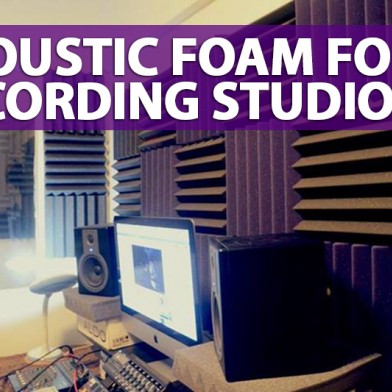Acoustic Foam for Recording Studios
- 23 September 2020 18:51:51
- Reviews: 0
- Views: 753
-

The walls of most modern home, and even more so professional recording studios, are sheathed with soundproofing material. Most often, acoustic foam rubber is used in this capacity for recording studios. The use of such material for sheathing allows not only to minimize the sounds coming from the studio to the outside, but also to ensure high-quality sound on the recording itself. That is, with the help of acoustic foam rubber for a recording studio, you can adjust the quality of the recording.
The use of acoustic foam rubber for recording studios is due to the fact that sound waves propagate in an enclosed space. Thus, all sound waves emanating from sound-reproducing devices, in one way or another, come into contact with the surfaces surrounding them. In some cases, they are simply absorbed by them. However, when sound waves are repeatedly reflected from different surfaces, sound waves are mixed, due to which the purity of sound is lost. Everything negatively affects the quality of the resulting sound recording. And it is precisely the use of acoustic foam that allows you to get rid of the described negative effects and ensure the purity of sound in the original quality.

In recording studios, most rooms are treated with acoustic foam. In particular, isolated cabins, as well as trekking areas, are recommended not to be completely covered. Instead, it makes sense to place foam rubber from the highest point to the bottom, approximately 30-40 cm from the floor. However, many vocalists claim that the complete treatment of the booth with acoustic foam makes the sound of the voice "dry". In this case, it is possible to use additional diffusers, or use a booth with a larger area.
It is believed that in recording studios, about 35-75% of the surface area should be covered to ensure optimal sound output, provided that rock, rap, techno, pop music is played. If choral performances are recorded, jazz or classical music is played, then the coverage of the studio walls should be at the level of about 35 ... 50% of the area. However, it is important to take into account the volume of the room, the style of music, equipment settings and other parameters. In any case, the room where the performance takes place should be more covered with acoustic foam rubber than the one where the sound engineer is located.


